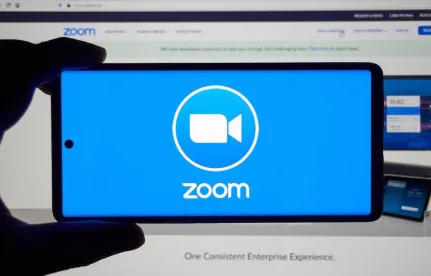Roughly 15 months ago the word “Zoom” would have conjured up images of cartoon race cars or maybe Dr. Seuss’ Go Dog Go book. Such images not only show our age but reflect how much our world has changed since the COVID-19 pandemic arrived.
In the legal world, Zoom allowed the practice of law to continue with limited interruption (once you learned what to do). In fact, Zoom meetings became so commonplace that many folks got “zoomed out” and lamented the absence of personal connections. We have all heard the stories or seen the commercials with Zoom faux pas galore – from dress code violations to forgetting to mute the microphone while the sound of a flushing toilet comes through the computer. Yes, that actually happened during a U.S. Supreme Court hearing last year. But from a practical perspective, clients have found Zoom technology a real time and expense saver.
Dealing with Unions in the Time of Zoom
Personally, I completed two collective bargaining negotiations in 2020 and 2021 all conducted via Zoom. The first one involved a facility in Alaska and had representatives based in Alaska, Virginia, Florida and Tennessee. In the second set of negotiations, the parties were in New Mexico and two different sites in Tennessee. In each scenario, Zoom technology provided the parties great flexibility in scheduling meetings and conducting negotiation sessions, including caucusing. In both cases, the parties were successful in negotiating a new CBA without major issues.
What Does That Mean Going Forward?
Zoom is unlikely to replace all face-to-face interactions. While the threat of strike, or an actual strike, could certainly change the dynamics of collective bargaining negotiations and more than likely be better served by an in-person presence, it’s not a given that Zoom could not be an integral part of resolving such situations. Particularly when “immediate availability” is key – having to travel and wait for arrival can create delays that hinder the resolution process. However, I fully expect clients to consider virtual options to reduce costs. This could mean minimizing many in-person meetings or maybe only those that require out-of-town travel. The costs incurred with air fare, rental cars, hotels, travel time, meals, etc. quickly add up. And any process that envisions months-long time commitments would be a key point in analyzing the benefits of virtual options. On the other hand, some things simply are better in person. Meeting your employees, their union representatives, or your lawyers to discuss significant issues or projects or setting eyes on previously unknown witnesses in a case are enhanced when meeting in person.
Certainly, disciplinary meetings and terminations would seem to be better performed in person. This is especially true in coaching sessions where the virtual option would seem to create a potential disconnect in getting the full breadth of your message across. It’s pretty easy to hang up on someone (and blame the proverbial “dropped call”); it’s not as easy to walk out of the office without creating a separate disciplinary issue.
Your litigation decisions may change as well. Deposing a plaintiff in person provides a better sense of that person as a witness since body language and mannerisms may typically go undetected in a Zoom interaction. Trial attorneys are welcoming back in-person trials and court hearings, but many depositions, procedural conferences and administrative hearings may remain remote depending on jurisdictional preferences. The fact that witnesses can appear via Zoom may increase the likelihood that a party will take those depositions, certainly for those witnesses who have left their employers and moved out of state.
The legal environment, like the rest of the business world, has changed dramatically since the pandemic. As the world opens back up and we greet the “new normal,” some of the traditional aspects of our lives, including conducting litigation, have changed dramatically. In-person meetings may be missed but we have to accept that our clients and colleagues have become accustomed to working remotely, and there are time and expense savings associated with that. Personally, I prefer in-person meetings in most circumstances. However, we all want to do the best job we can for our clients to produce great results in a cost-efficient manner, and I have embraced Zoom as a way to do that.





 />i
/>i
